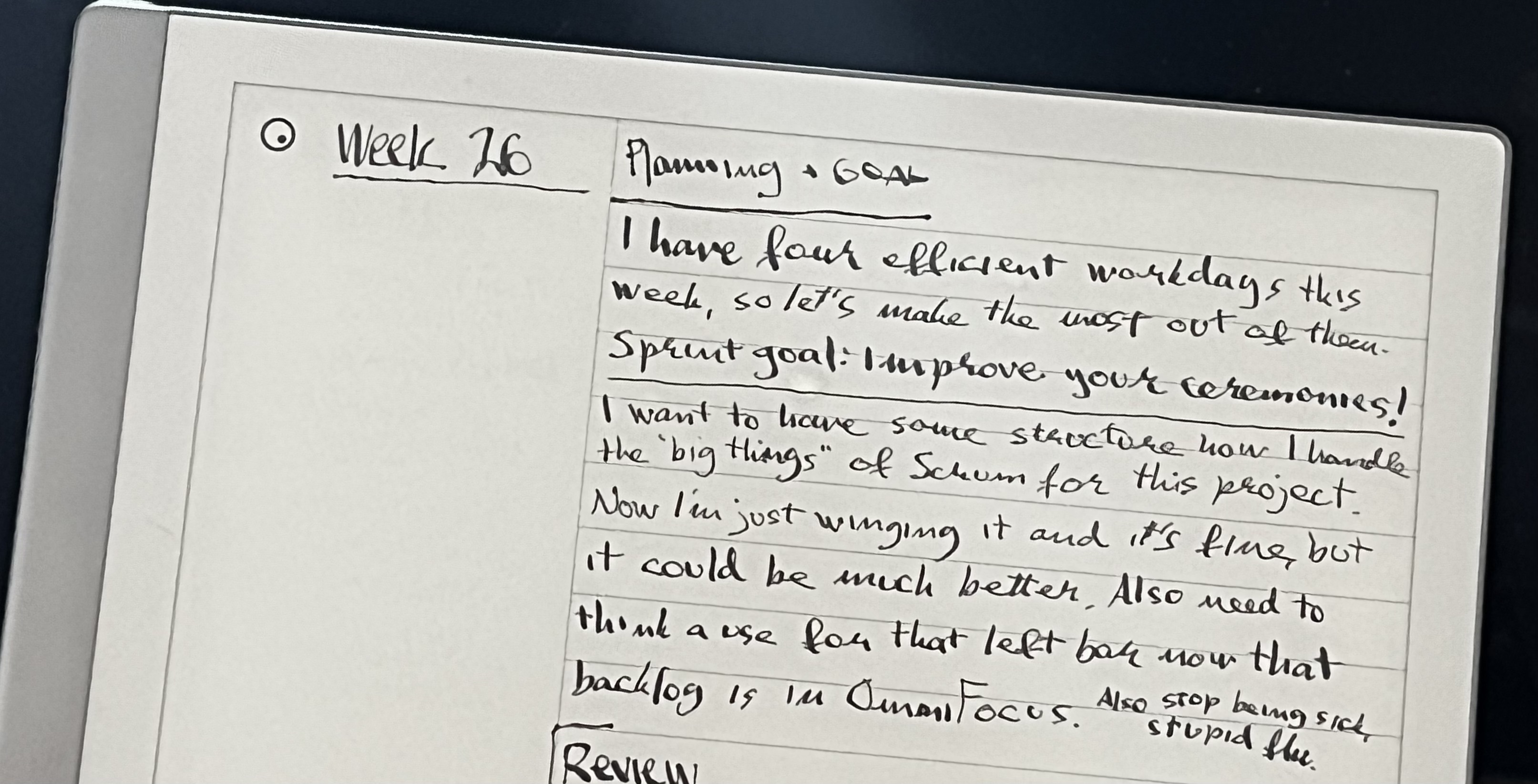
Every sprint starts with a sprint planning session. Surprisingly, this is also a super important part of the whole Scrum process. It would be easy to just blast past sprint planning and continue working on the next items on the backlog but this would waste a huge opportunity to be intentional what you are going to do next.
In sprint planning the most important thing is to create the sprint goal.Sprint goal then drives everything that happens in the sprint: what items will be worked on, what is the priority order and who will you be thinking about when working on those items. If sprint planning is handwaned or half-assed you might at worse waste a whole sprint building something random without knowing if it makes sense or if it should be built at all. That would be just madness. Madness.
So, what does Sprint Planning look like for scrumlife?
First, I look at my calendar to see if there are any major things I need to take into account. It's summer now, so there's bound to be some trips and visits and such to pay attention to when making plans.
Next, I'll think what do I want to accomplish this week.
I know that the amount of things I can concentrate on is pretty low per week. My velocity can handle making sensible progress on maybe two projects per week. Once all the routines like handling existing customers, sleeping, working out, cooking, etc. are taken care of, there's about two "hobbies" or new things I can manage at the same time.
It's a surprisingly low number really. You always like to think there's time to do extra projects or write a book or plan a trip. Once you really start to track what actually gets attention, it's always surprising how few things it is per a week. For example now that I started this Scrumlife blog and also started building a new product with a friend, it seems I have dropped writing my book blog and working on my Product Owner book pretty much completely. I didn't really decide to do so, it just happened.
The idea of velocity and the ceremony of sprint planning help me notice these kind of developments and make conscious choices about them instead of just realising something happened afterwards. For example I'm pretty certain I want to take some weeks to just single-task writing the PO book at some point. Now I just know that I should explicitly leave all other projects aside for that week.
This focusing happens through crafting a sprint goal. Sprint goal informs all the decisions made about and in the sprint but at best it's something much more than just a declaration about what you are going to focus on. Sprint goal can be answering a question or improving something important. So for example "improved tutorials" might work as a sprint goal, but "improved onboarding experience" or "less users lost during first day of use" might be even better.
Crafting an inspiring and actionable sprint goal is not easy, so it's good that is has a ceremony of it's own. I could obviously improve what kind of goals I create for these weekly sprints for scrumlife but maybe I will get better at it when I do it more. It will be interesting to check later if the type of sprint goals change after I've done this for a while and can look at the weekly goals for a longer period of time.
Anyways! The rest of the planning is used to pick a preliminary sprint backlog by choosing items from the product backlog. For more talk about backlogs wait for my separate post about them. I'm still searching for good ways and structures to create sprint goals, so stay tuned for developments about this subject also.
Any questions at this point?
Scrum the day

